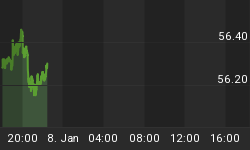
"Am I diversified?"
It's a question every investor should ask. It's a question that CNBC's bombastic stock guru Jim Cramer encourages his followers to pose. Unfortunately, Cramer's answers are one-dimensional - he looks at diversification only in terms of stock holdings.
Having a stock portfolio that is diversified among different sectors and styles is just one aspect of diversification. During a stock market crash, any broadly diversified stock portfolio can be expected to go down with the market.
Only a gambler would be positioned 100% in stocks. And at today's dangerously lofty valuations, which are back near 2007 and 2000 levels by some metrics, going all-in on stocks would be a gamble with elevated risk.
Nearly all financial advisors recommend allocations to bonds and cash to avoid overexposure to equities. Modern Portfolio Theory tells them that the greater the allocation to bonds and cash, the less risk. That's mostly held true over the past 30 years, because interest rates have been on the decline. Falling rates mean a rising bond market. That's the only paradigm with which most financial advisors today are familiar.

What happens when inflation starts taking off? What happens when rates start rising from today's historically low levels and bond values trend down for months, then years? In a rising rates environment, all dollar-denominated financial assets could be at risk - stocks, bonds, whole life insurance, fixed annuities, etc.
That's where precious metals come in.
Gold and silver are uncorrelated to conventional financial assets. The metals can gain (or at least retain) value during times when other asset classes are in bear markets. In fact, gold prices tend to move inversely to investor confidence. During the late 1970s stagflation, the 2000-2002 tech wreck, and the 2008 financial crisis, gold performed far better than portfolios containing only conventional financial assets.
Despite the obvious advantages of including gold in a diversified portfolio, the financial industry is institutionally biased against precious metals. Bankers, stock brokers, insurance agents, and financial planners don't benefit when investors diversify into hard assets. The interests of the financial establishment aren't aligned with those of individual investors. If they were, then financial advisors everywhere would advocate a sizeable allocation to physical precious metals.
A study by Ibbotson Associates found that investors who put 7.1% to 15.7% of their portfolios in precious metals enjoy superior risk-adjusted returns. Yet the average investor has less than 1% of his assets in bullion!

If the average investor started allocating around 10% of his portfolio to precious metals, imagine the shock to the system! Prices for gold and silver would necessarily skyrocket.
How much you allocate to precious metals is ultimately an individual decision that depends on your own life circumstances, goals, risk tolerance, and expectations for the future. If you expect a currency crisis within your lifetime, then you might want to boost your metals allocation to 20% - 25%. Or more if you want to be more aggressive.
Your current allocation to bullion may not be as big as you think. Consider all your financial assets, from brokerage and bank accounts to savings bonds and life insurance policies. In the event of a currency collapse, your investments with these counterparties could all be at risk. Do you own enough hard money in the form of bullion to offset that risk?
Here's Why You Should Also Diversify within Your Precious Metals Holdings
Consider also the importance of diversifying within your bullion holdings. If all you have are large bars stored in a third-party vault, your practical ability to access and spend your bullion during a crisis will be limited.
You should have at least something of an emergency stash hidden away at home where you can get your hands on it anytime, day or night. It should consist of several different sizes and forms of gold and silver for maximum flexibility and barterability. You'll want .999 pure silver one-ouncers as well as fractional sizes, with pre-1965 quarters and dimes being a practical, low-premium option. One-ounce gold coins are useful for storing more significant amounts of wealth. But adding half-ounce, quarter-ounce, and tenth-ounce gold pieces will give you greater flexibility for bartering, trading, and gifting.

Consider diversifying beyond gold and silver and into the platinum group metals (PGMs). Though platinum and palladium bullion products aren't as widely recognized or as liquid as gold and silver, there are advantages to having exposure to the PGMs. As scarce industrial metals that are used primarily by the automotive industry, they have their own unique supply/demand fundamentals. Even during times when gold and silver are slumping, the PGMs can be appreciating.
This is especially the case with palladium, which in recent years has regularly decoupled from the price trends of the other precious metals. From a portfolio diversification standpoint, that's an advantage. It means you can own a precious metal that has the privacy and portability attributes of gold but with the price-performance attributes of a separate asset class.
Are you diversified? Perhaps the better question is: Can you become more fully diversified? The vast majority of investors can and should.
Even if you are among the minority of investors who holds a sizable allocation to physical precious metals, you can probably take steps to become a more fully diversified precious metals investor. Whether it's acquiring tenth-ounce gold coins or one-ounce palladium bullion bars, by becoming more broadly diversified within the precious metals space, you'll become financially more resilient.
















